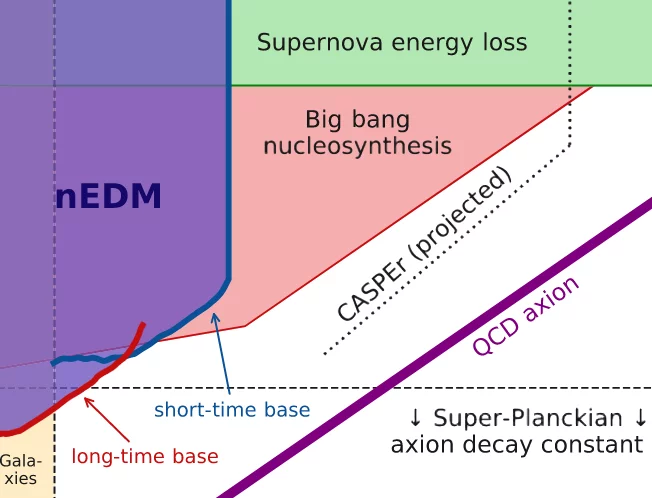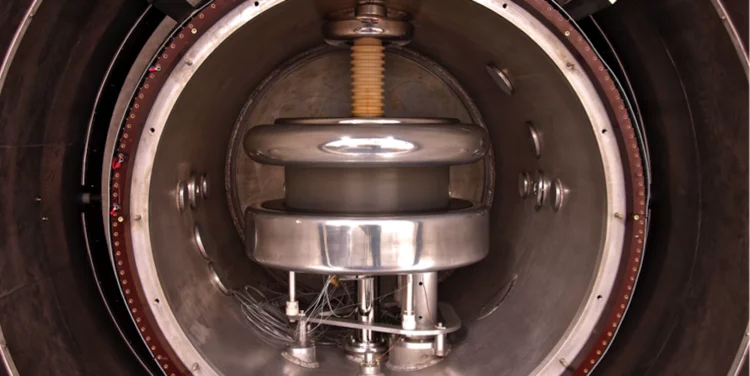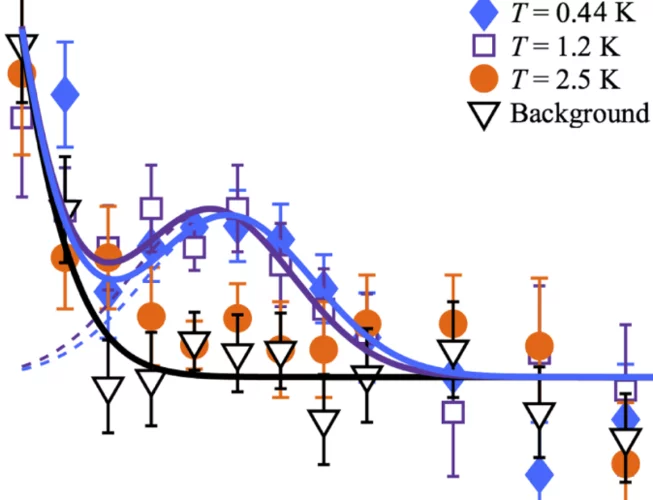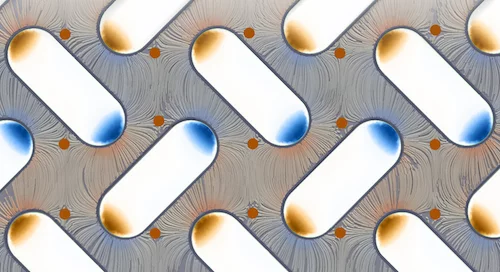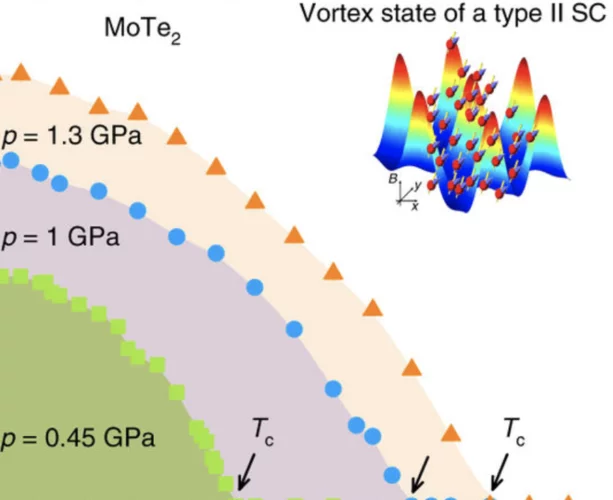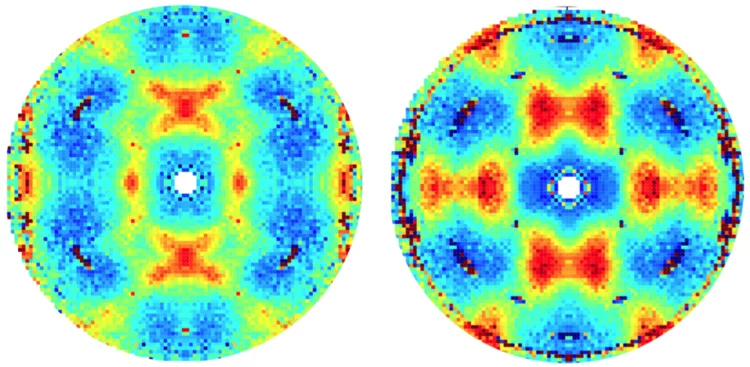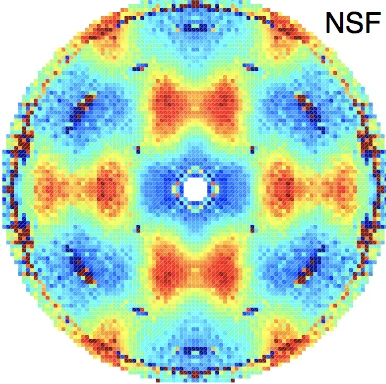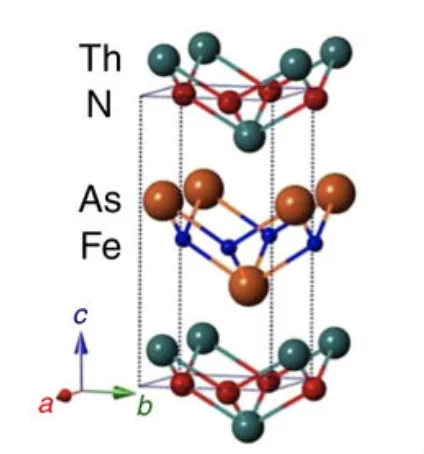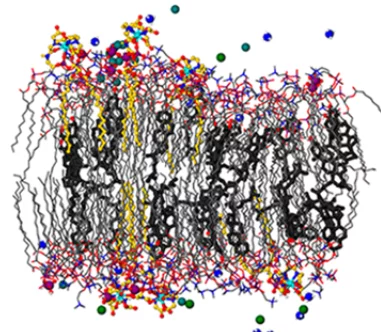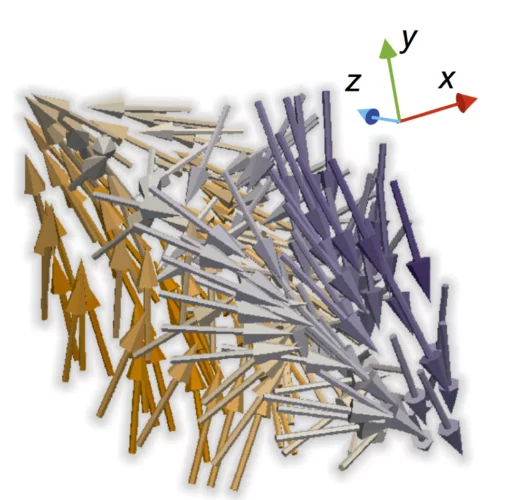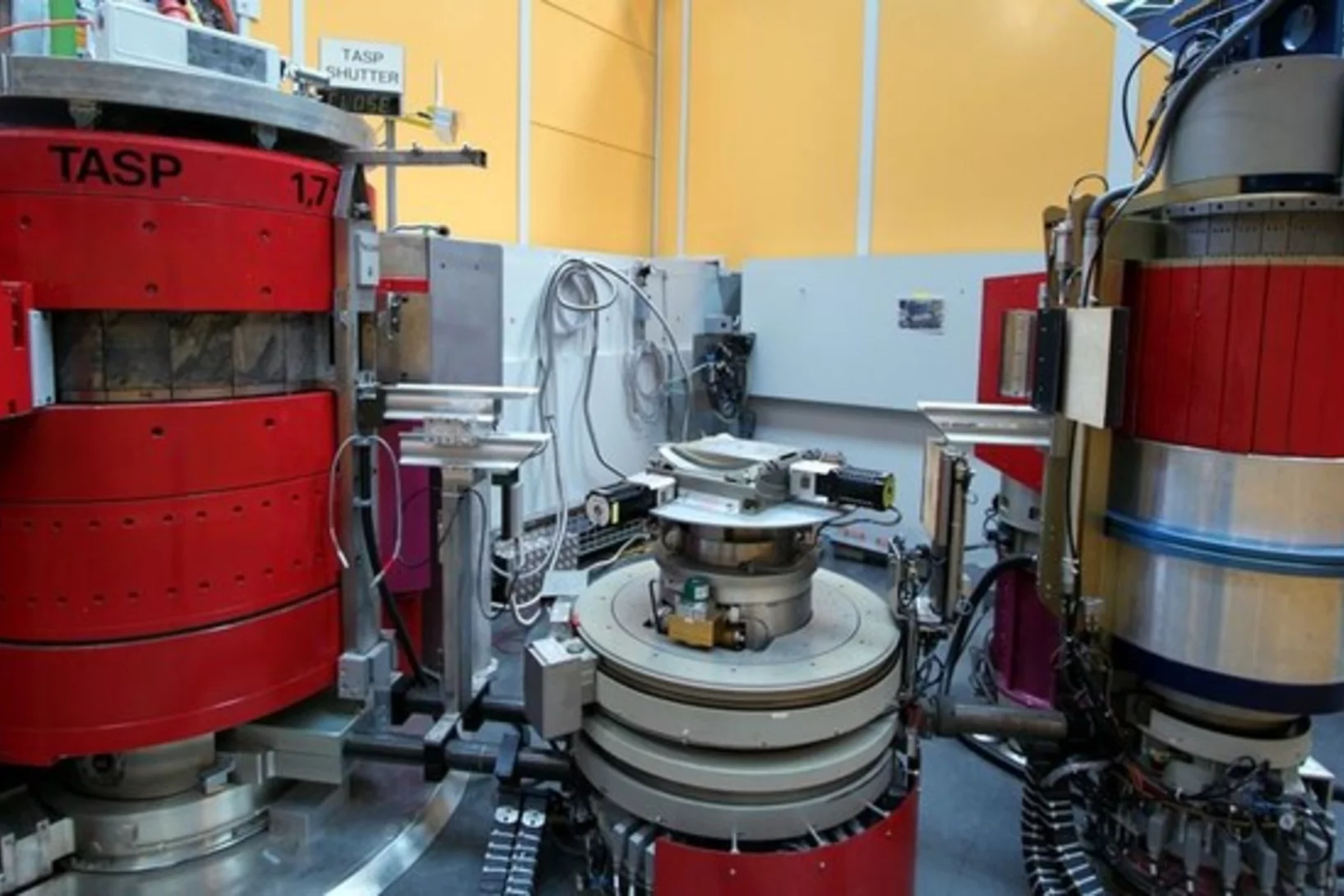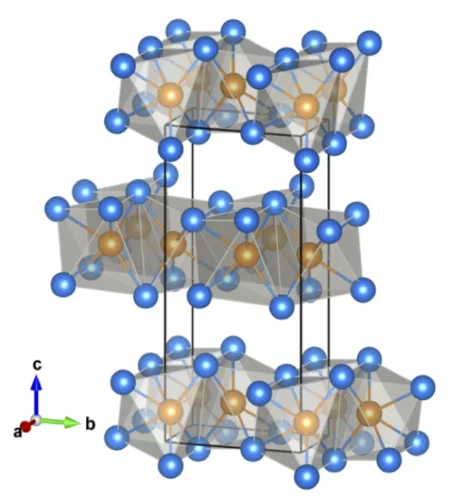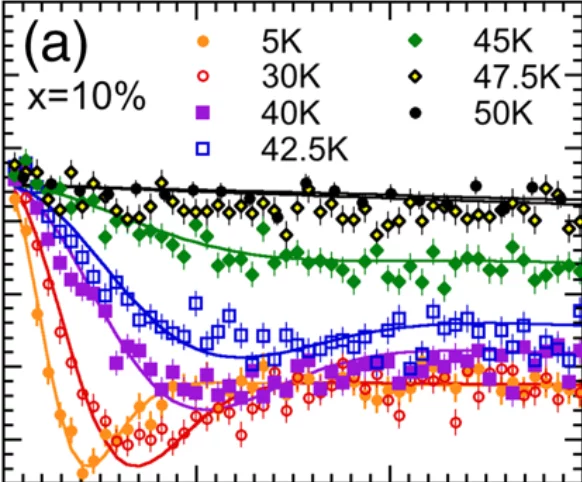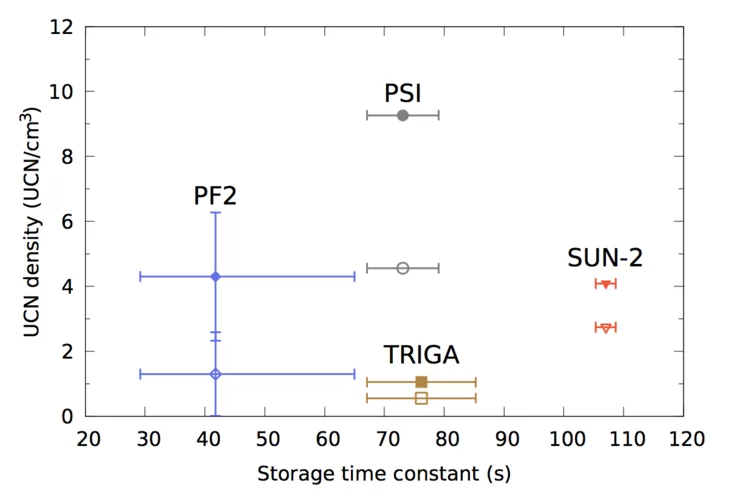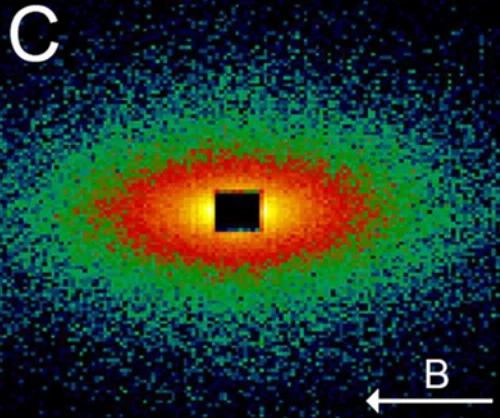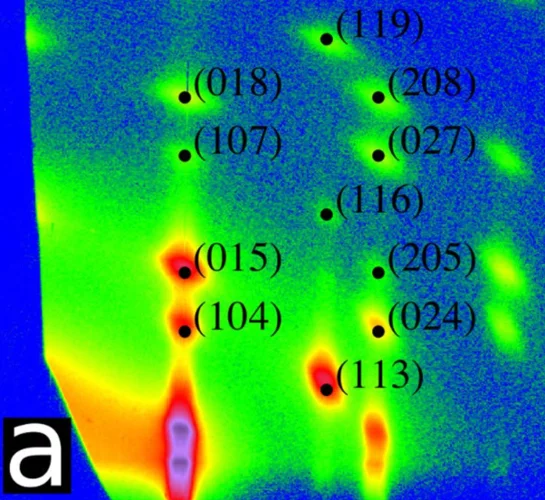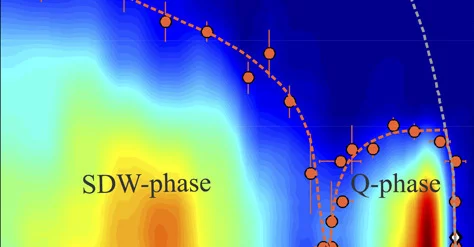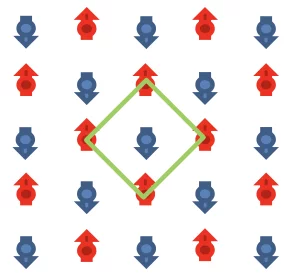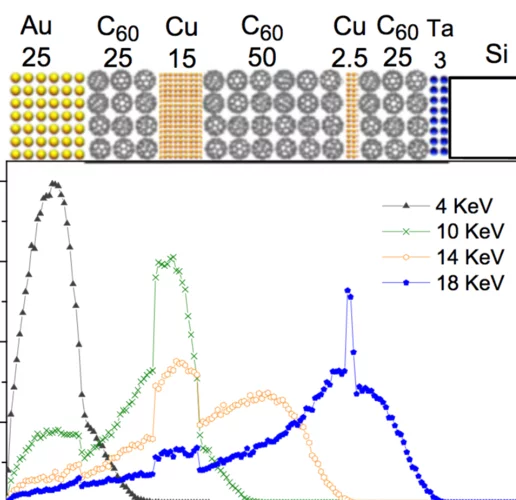The Charpak-Ritz Prize 2018 is awarded to Roland Paul Horisberger
The Charpak-Ritz Prize 2018, jointly awarded by the French Physical Society and the Swiss Physical Society, has been bestowed to Roland Paul Horisberger for his numerous contributions to the development of precision silicon vertex detectors for particle physics experiments as well as for the application of these technologies in X-ray photon sciences.
Tuning Nanoparticle–Micelle Interactions and Resultant Phase Behavior
The evolution of the interaction between an anionic nanoparticle and a nonionic surfactant and their resultant phase behavior in aqueous solution in the presence of electrolyte and ionic surfactants have been studied. The mixed system of anionic silica nanoparticles (Ludox LS30) with nonionic surfactant decaethylene glycol monododecylether (C12E10) forms a highly stable clear phase over a wide concentration range of surfactant.
Gapless Spin Excitations in the Field-Induced Quantum Spin Liquid Phase of α-RuCl3
α-RuCl3 is a leading candidate material for the observation of physics related to the Kitaev quantum spin liquid (QSL). By combined susceptibility, specific-heat, and nuclear-magnetic-resonance measurements, we demonstrate that α-RuCl3 undergoes a quantum phase transition to a QSL in a magnetic field of 7.5 T applied in the ab plane. We show further that this high-field QSL phase has gapless spin excitations over a field range up to 16 T.
Search for Axionlike Dark Matter through Nuclear Spin Precession in Electric and Magnetic Fields
We report on a search for ultralow-mass axionlike dark matter by analyzing the ratio of the spin-precession frequencies of stored ultracold neutrons and 199Hg atoms for an axion-induced oscillating electric dipole moment of the neutron and an axion-wind spin-precession effect. No signal consistent with dark matter is observed for the axion mass range 10-24 ≤ ma ≤ 10-17eV.
A null result full of insights
A laboratory-based search for axion dark matter ended, not unexpectedly, without a discovery. It provides, however, valuable constraints for the properties that these hypothetical particles can have — and thus a guide to where to look next.
Spin Resonance and Magnetic Order in an Unconventional Superconductor
Unconventional superconductivity in many materials is believed to be mediated by magnetic fluctuations. It is an open question how magnetic order can emerge from a superconducting condensate and how it competes with the magnetic spin resonance in unconventional superconductors. Here we study a model d-wave superconductor that develops spin-density wave order, and find that the spin resonance is unaffected by the onset of static magnetic order.
Emergent dynamic chirality in a thermally driven artificial spin ratchet
Modern nanofabrication techniques have opened the possibility to create novel functional materials, whose properties transcend those of their constituent elements. In particular, tuning the magnetostatic interactions in geometrically frustrated arrangements of nanoelements called artificial spin ice can lead to specific collective behaviour, including emergent magnetic monopoles, charge screening and transport, as well as magnonic response.
Magnetic structures take a new turn
The unexpected finding that in an ‘artificial spin ice’ magnetostatic energy can be transformed into directed rotation of magnetization provides fresh insights into such nano-patterned magnetic structures — and might enable novel applications in nanoscale devices.
The importance of knowing your stripes
A collaboration between three NUM laboratories has found that magnetic ‘stripe order’ in high-temperature superconductors not only co-exists with superconducting order, but might very well be intimately connected with it.
MultiFLEXX - The new multi-analyzer at the cold triple-axis spectrometer FLEXX
The first experimental characterization of a multiple energy analysis wide angle backend for a cold triple-axis spectrometer is reported. The multi-analyzer module MultiFLEXX employs 155 detection channels which simultaneously probe an extensive range in wavevector and energy transfer. Successful mapping of magnetic excitations in MnF2 and Ho demonstrate order of magnitude gains in data collection efficiency using this novel type backend.
Signatures of the topological s+- superconducting order parameter in the type-II Weyl semimetal Td-MoTe2
In its orthorhombic Td polymorph, MoTe2 is a type-II Weyl semimetal, where the Weyl fermions emerge at the boundary between electron and hole pockets. Non-saturating magnetoresistance and superconductivity were also observed in Td-MoTe2. Understanding the superconductivity in Td-MoTe2, which was proposed to be topologically non-trivial, is of eminent interest.
Frustratingly disordered
A study of how disorder affects a ‘frustrated’ magnet reveals a surprising robustness of the underlying quantum many-body state, and provides evidence for emerging quantum phenomena induced by disorder.
Coulomb spin liquid in anion-disordered pyrochlore Tb2Hf2O7
The charge ordered structure of ions and vacancies characterizing rare-earth pyrochlore oxides serves as a model for the study of geometrically frustrated magnetism. The organization of magnetic ions into networks of corner-sharing tetrahedra gives rise to highly correlated magnetic phases with strong fluctuations, including spin liquids and spin ices. It is an open question how these ground states governed by local rules are affected by disorder.
Commissioning and first performance studies of the new CMS pixel detector
In the previous months the new CMS pixel detector was brought into operation. The detector was moved from PSI to CERN and installed in February, followed by an intensive period of commissioning and calibration. This process mostly involved the adjustment of many operational parameters which influence the detector performance, e.g.
Complementary Response of Static Spin-Stripe Order and Superconductivity to Nonmagnetic Impurities in Cuprates
We report muon-spin rotation and neutron-scattering experiments on nonmagnetic Zn impurity effects on the static spin-stripe order and superconductivity of the La214 cuprates. Remarkably, it was found that, for samples with hole doping x ≈ 1/8, the spin-stripe ordering temperature Tso decreases linearly with Zn doping y and disappears at y ≈ 4%, demonstrating a high sensitivity of static spin-stripe order to impurities within a CuO2 plane.
Equilibrium Skyrmion Lattice Ground State in a Polar Easy-plane Magnet
The skyrmion lattice state (SkL), a crystal built of mesoscopic spin vortices, gains its stability via thermal fluctuations in all bulk skyrmion host materials known to date. Therefore, its existence is limited to a narrow temperature region below the paramagnetic state. This stability range can drastically increase in systems with restricted geometries, such as thin films, interfaces and nanowires.
High-Tc superconductivity in undoped ThFeAsN
Unlike the widely studied ReFeAsO series, the newly discovered iron-based superconductor ThFeAsN exhibits a remarkably high critical temperature of 30 K, without chemical doping or external pressure. Here we investigate in detail its magnetic and superconducting properties via muon-spin rotation/relaxation and nuclear magnetic resonance techniques and show that ThFeAsN exhibits strong magnetic fluctuations, suppressed below ≈35 K, but no magnetic order.
Understanding the Enhanced Magnetic Response of Aminocholesterol Doped Lanthanide-Ion-Chelating Phospholipid Bicelles
Cholesterol (Chol-OH) and its conjugates are powerful molecules for engineering the physicochemical and magnetic properties of phospholipid bilayers in bicelles.
Three-dimensional magnetization structures revealed with X-ray vector nanotomography
In soft ferromagnetic materials, the smoothly varying magnetization leads to the formation of fundamental patterns such as domains, vortices and domain walls. These have been studied extensively in thin films of thicknesses up to around 200 nanometres, in which the magnetization is accessible with current transmission imaging methods that make use of electrons or soft X-rays.
New quantum state observed in a Shastry–Sutherland compound
Scientists from PSI and the École polytechnique fédérale de Lausanne (EPFL) have shown experimentally, for the first time, a quantum phase transition in strontium copper borate, the only material to date that realizes the famous Shastry–Sutherland quantum many-body model.
4-spin plaquette singlet state in the Shastry–Sutherland compound SrCu2(BO3)2
The study of interacting spin systems is of fundamental importance for modern condensed-matter physics. On frustrated lattices, magnetic exchange interactions cannot be simultaneously satisfied, and often give rise to competing exotic ground states. The frustrated two-dimensional Shastry–Sutherland lattice realized by SrCu2(BO3)2 is an important test to our understanding of quantum magnetism.
Three-Dimensional Electronic Structure of the Type-II Weyl Semimetal WTe2
By combining bulk sensitive soft-x-ray angular-resolved photoemission spectroscopy and first- principles calculations we explored the bulk electron states of WTe2, a candidate type-II Weyl semimetal featuring a large nonsaturating magnetoresistance. Despite the layered geometry suggesting a two-dimensional electronic structure, we directly observe a three-dimensional electronic dispersion.
Quantum Griffiths Phase Inside the Ferromagnetic Phase of Ni1-xVx
We study by means of bulk and local probes the d-metal alloy Ni1-xVx close to the quantum critical concentration, xc ≈ 11.6%, where the ferromagnetic transition temperature vanishes. The magnetization-field curve in the ferromagnetic phase takes an anomalous power-law form with a nonuniversal exponent that is strongly x dependent and mirrors the behavior in the paramagnetic phase.
Comparison of ultracold neutron sources for fundamental physics measurements
Ultracold neutrons (UCNs) are key for precision studies of fundamental parameters of the neutron and in searches for new charge-parity-violating processes or exotic interactions beyond the Standard Model of particle physics. The most prominent example is the search for a permanent electric-dipole moment of the neutron (nEDM). We have performed an experimental comparison of the leading UCN sources currently operating.
Methods for Generating Highly Magnetically Responsive Lanthanide-Chelating Phospholipid Polymolecular Assemblies
Mixtures of 1,2-dimyristoyl-sn-glycero-3-phosphocholine (DMPC) and its lanthanide ion (Ln3+) chelating phospholipid conjugate, 1,2-dimyristoyl-sn-glycero-3-phospho-ethanolamine-diethylene triaminepentaacetate (DMPE-DTPA), assemble into highly magnetically responsive polymolecular assemblies such as DMPC/DMPE-DTPA/Ln3+ (molar ratio 4:1:1) bicelles.
Coupled multiferroic domain switching in the canted conical spin spiral system Mn2GeO4
Despite remarkable progress in developing multifunctional materials, spin-driven ferro-electrics featuring both spontaneous magnetization and electric polarization are still rare. Among such ferromagnetic ferroelectrics are conical spin spiral magnets with a simultaneous reversal of magnetization and electric polarization that is still little understood. Such materials can feature various multiferroic domains that complicates their study.
Superlattice growth and rearrangement during evaporation-induced nanoparticle self-assembly
Understanding the assembly of nanoparticles into superlattices with well-defined morphology and structure is technologically important but challenging as it requires novel combinations of in-situ methods with suitable spatial and temporal resolution.
Distinct, but not so different
Among superconducting materials, CeCoIn5 stands out as a rare case where superconductivity gives rise to magnetic order. An international team led by PSI physicist Michel Kenzelmann now reports that when small amounts of impurities are implanted into CeCoIn5, then two distinct magnetic phases appear — and these are surprisingly similar to one another.
Pressure-induced magnetic order in FeSe: A muon spin rotation study
The magnetic order induced by the pressure was studied in FeSe by means of muon spin rotation (μSR) technique.
Emergent magnetism at transition-metal-nanocarbon interfaces
Interfaces are critical in quantum physics, and therefore we must explore the potential for designer hybrid materials that profit from promising combinatory effects. In particular, the fine-tuning of spin polarization at metallo–organic interfaces opens a realm of possibilities, from the direct applications in molecular spintronics and thin-film magnetism to biomedical imaging or quantum computing.





